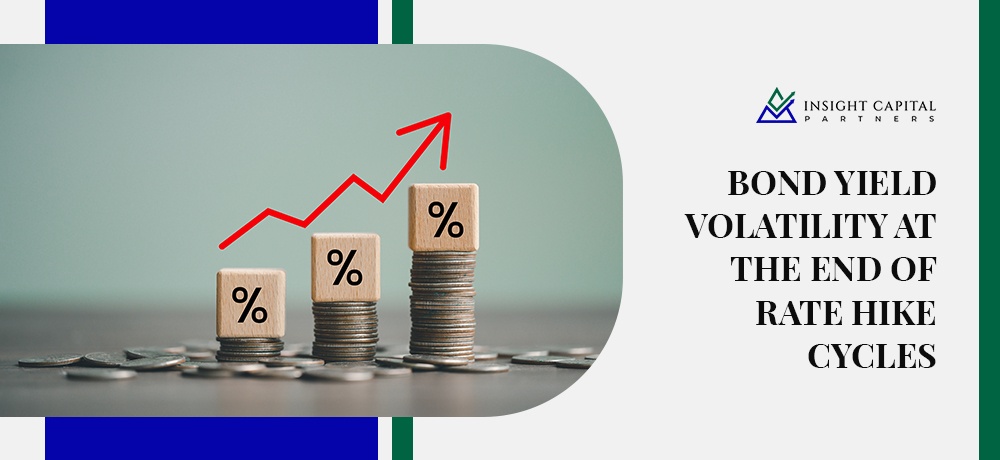Bond Yield Volatility at the End of Rate Hike Cycles
- David Campbell
Categories: Insight

At the conclusion of rate hike cycles, investors often find themselves navigating a landscape of heightened uncertainty and volatility. This blog delves into the dynamics of bond yield volatility at the end of rate hike cycles and the factors that influence it.
- The Relationship Between Interest Rates and Bond Yields
When central banks, like the Federal Reserve in the United States, raise interest rates to combat inflation or achieve other monetary policy objectives, bond prices tend to fall, pushing yields higher. As a rate hike cycle concludes, the market becomes sensitive to the central bank's tone and future policy direction, setting the stage for increased bond yield volatility. - The Expectation Game
Market participants closely monitor central bank communications and economic indicators to anticipate future interest rate moves. As a rate hike cycle winds down, uncertainty builds, and market expectations can lead to sudden shifts in bond yields. If investors believe that a central bank is nearing the end of a tightening cycle, bond yields may start to rise in anticipation, causing volatility in the bond market. - Economic Factors
The broader economic environment also influences bond yield volatility at the end of rate hike cycles. Economic data releases, such as employment numbers, inflation reports, and GDP growth, can either reinforce or challenge expectations regarding interest rates. A robust economic outlook might lead to more aggressive rate hikes, while signs of a weakening economy could prompt the central bank to pause. - Global Factors and Cross-Market Spillover
In today's interconnected global financial markets, events abroad can have a profound impact on bond yield volatility. International developments, such as geopolitical tensions, trade disputes, or currency movements, can spill over into domestic markets. Investors may seek safe-haven assets like U.S. Treasury bonds. - Risk Management and Portfolio Strategies
Given the heightened bond yield volatility at the end of rate hike cycles, investors need to adopt prudent risk management and portfolio strategies. Diversification, active monitoring of central bank policy statements, and staying informed about economic indicators are crucial. Some investors might choose to allocate funds to bonds with different maturities or consider other fixed-income options, such as corporate bonds or municipal bonds.
Bond yield volatility at the conclusion of rate hike cycles is a complex interplay of economic factors, market expectations, and global influences. Investors should be prepared for the uncertainty that accompanies this phase and tailor their investment strategies accordingly. Understanding the relationship between interest rates and bond yields, monitoring central bank actions, and maintaining a diversified portfolio are key in navigating the volatile waters of the bond market as a rate hike cycle nears end. #insight